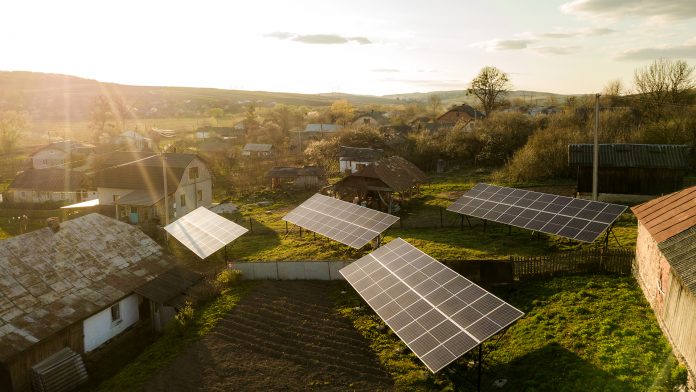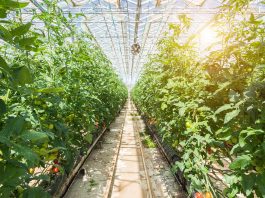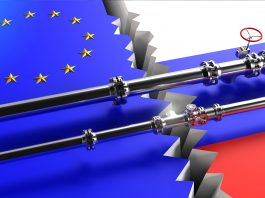Professor Birgitte Bak-Jensen from Aalborg University outlines how EU projects will help to establish local energy communities, ensuring carbon neutrality by intelligently controlling the local production and usage of green energy.
Local citizens must be engaged in the future green energy transition no matter where they are situated in the world. In addition, research should focus not only on technical solutions, but crucially it must identify how to ensure user involvement and adoption of any new technologies and social innovations. The new solutions should be seen in a holistic perspective, where the concrete technical solutions are implemented, whilst also considering the human, social, market, regulatory and environmental aspects. Such an approach will ensure realistic solutions, which are welcomed and easily accommodated by the citizens.
In general, households account for around one fourth of the final energy consumption in Europe and around one fifth of the gross inland energy consumption.1 Out of this, nearly two thirds are for heating, of which renewables today only account for a quarter.1 It is, therefore, essential to make the overall households’ energy consumption, and especially the heating, greener, carbon neutral and more energy efficient, if we are to be able to achieve the UN’s climate goals. One of the foreseen methods is to form local energy communities with flexible energy consumption adapted to the actual production of renewable power, no matter if it is produced locally or globally.
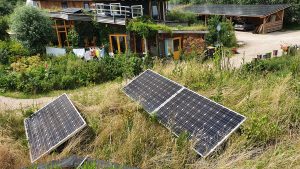
Aalborg University has, in collaboration with researchers from Denmark, the Netherlands, Poland and India, started two new H2020 projects called SERENE (Sustainable and Integrated Energy Systems in local communities) and SUSTENANCE (Sustainable Energy System for Achieving Novel Carbon Neutral Energy Communities) where the main goal is to ensure a green transition in local communities, integrating as much renewable energy as possible, in a flexible and efficient way.
A main issue in this transition is not only the technical solutions, but also how to engage the local citizens to ensure their help and acceptance in relation to accelerating the process to find practical solutions that ensure a sustainable energy system, whilst at the same time achieving customer satisfaction with low costs, user comfort and easy access.
Nine demonstrator sites in local communities across the EU and India
Both projects focus on the needs of the different local communities across the four participating countries. A total of nine demonstration sites are established: three in the SERENE project with sites in Denmark, the Netherlands, and Poland; six in the SUSTENANCE project, including Denmark, the Netherlands, Poland; and three across India. All the demonstration sites focus on the formation of local energy communities to meet the energy needs in relation to two or more energy vectors i.e., electricity, heat, water, wastewater and transport and their connection to the supply of renewable power. Technical solutions, such as integrating photovoltaic systems, thermal storages, and electrical batteries, demand response from flexible consumers, as well as the application of forecast methods, and intelligent control will be applied to find the most energy-efficient solutions. The integrated energy solutions will then be adapted to the local environment, the societal needs and economy in the local communities.
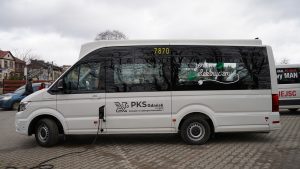
Technical solutions for local needs with global applications
Even though the local economy, societal status and needs, political goals, regulations, and the technical infrastructure vary from site to site, the goals of both projects are to show that the same technological intelligent control solutions for integrated energy systems can be successfully applied at each demonstration site. This will prove that the solutions are generally applicable and can be reproduced globally. The main goal is to show that it is a question of controlling the consumption and adapting it to the power production and grid capacity of each locality, no matter if it is for heating houses and charging electrical vehicles in Denmark and the Netherlands, for heating, electrical vehicle charging and water treatment in Poland, or for water pumping, cooking and charging of electric rickshaws in India.
The technical conditions at the demonstration sites are very different, which will help both projects verify that the methods for generating flexibility and carbon neutral energy islands are generally applicable. For example, in Denmark, the Netherlands, Poland, and the campus at ITT Bombay, the local communities are connected to strong electrical grids which can already meet the local demand, no matter the level of local production. In contrast, two of the sites in India are in remote rural areas with either a weak electrical grid connection or a system that needs to be built up from the beginning as an isolated micro-grid energy system (Figs. 1 – 5). This situation provides very different conditions for the actual control and demand for storage capacity and will really show the extremes of the conditions for the control methods, thereby verifying that the methods for generating flexibility and carbon neutral energy islands are generally applicable.
Developing intelligent forecast methods
Stable electrical systems require that the demand matches the supply. In an ideal scenario, the demand for energy to run electric devices should match the time when the generation of renewable energy is high and then, conversely, this demand should be reduced when the production levels are low. This scenario is, of course, the same when storing renewable energy in batteries and heat-storage devices. This ideal scenario would also match production levels to the global price for electricity, enabling local communities to sell surplus energy at a high price. It is this ‘ideal scenario’ that both SERENE and SUSTENANCE hope to achieve.
To do this, the grid-connected systems require a control system operating on two levels. The first level allows for the local communities to use as much of their locally produced renewable energy as possible, or to store it and only sell to the grid, if there is a surplus of local production and the storages are full, and hopefully sell when the electricity price is high. The second level is to allow the system to buy electricity either for immediate use or for storage when prices are low. The system could then also sell energy to the grid from the local production or storage when the electricity price is high. The better one can forecast the levels of energy consumption and production, the better the possibilities are to optimise the control of the demand and charging of storages to the actual expected production and electricity price. Therefore, developing more intelligent and precise forecast methods are a large part of both projects.
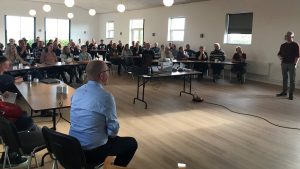
Autarkic local energy systems for self-sufficiency and improved quality of life
A key focus of the European Commission is to explore the possibilities to form local energy communities.2 Therefore, both projects will consider the formation of autarkic local energy systems and compare them to more traditional decentralised systems that function within a largely centralised electricity system. The projects will investigate whether a more local autarkic system has consequences for the local stakeholders and their participation in the energy market. The formation of such autarkic local energy systems might need exemptions from existing regulations, even though new rules for the formation of local energy communities have been provided for via the EU’s Clean Energy for All Europeans legislative package.3 The formation of local communities demands research into both governance structures including ownership and management, but also methods to gain user acceptance of any new technologies including energy storage and expectations for the provision of user flexibility. When it comes to the control of energy devices for the optimisation of overall consumption, the consumers will, in the future, need to be more aware of the relationship between the best time to consume energy and adapt their consumption to when the energy is produced. This requires clear instructions and guidelines on how to raise citizen awareness levels as well as their interest in participation in the green transition. Such participation provides a range of incentives from the economical side (i.e., lower electricity bills), but also improvements to the quality of life of the citizens in the communities. A major example is from reductions to CO2 emissions by replacing fossil fuels with green, renewable energy, as well as increasing the availability of electricity in India to provide for water pumping, cooking and the charging of electric rickshaws for transporting children to school, which will improve the everyday life of women and children.
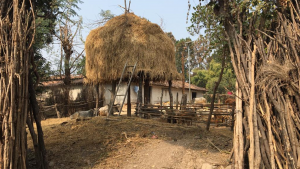
Social readiness levels as a method to measure social acceptability
The social readiness level (SRL), as defined by Innovation Fund Denmark,4 is a method of assessing the level of societal adaption to a technology, a social project, a product, an intervention or an innovation. This methodology will be used in both projects to help assess the levels of acceptability, by the communities involved, to the technologies introduced. The SRL will be very different for each demonstration site, which means that the guidelines and instructions for how to engage the local communities and relevant stakeholders, must take this aspect into account. For instance, the SRL level at one of the demonstration sites in the Netherlands is already extremely high since the citizens have already formed a local community, have electrical boilers and heat-pumps, and are now looking into better charging facilities for their cars, including more intelligent control of their heat-pumps and electrical boilers. At the Danish demonstrations, there are rather high SRL levels towards the integration of new technical equipment and people are well informed about heat-pump utilisation and wish to replace their expensive gas-fired heating systems. However, their knowledge on the formation of local communities is low, and guidelines and information for this will need to be established. On the other hand, for some of the rural communities in India, SRL levels are expected to be very low due to lack of awareness, plus minimal experience of the integration of new technologies, so a more involved approach to boost the SRL will be required.
The future of the green transition in local energy communities
With the expected increase in the use of renewables, (i.e. wind power and photovoltaics) which have fluctuating production levels that are dependent on the weather conditions, it is extremely important to find areas where energy consumption can become flexible and adapted to the actual level of production. This is especially important since central power plants are being phased out due to a reduction in the use of fossil fuels. The formation of local energy communities is one method to achieve this, since the energy is produced locally, and the demand can be intelligently controlled to match production levels.
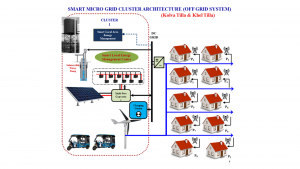
But seen in the more global perspective for countries like Denmark and the Netherlands, where very large wind farms and solar power plants are established, the local communities cannot be isolated autarkic islands, since in these cases the power balancing is a global issue. Here, as previously mentioned, the control has not only to deal with the local production and demand, but also to explore how the local community can provide ancillary service to the global system, taking grid capacity and the local conditions (i.e., comfort level, storage capacity, etc.) into account. This means that projects focused on local energy communities and how they can contribute to the green transition at sites which have isolated micro-grid systems is a matter of adjusting the demand to the production, while, when sites are connected to the grid, they should be seen as an aggregated unit, with the capacity to contribute to the global energy system via the provision of ancillary services. Business cases should also take this into consideration. Furthermore, local energy communities should be used to paving the way for sector coupling among different energy vectors – i.e. electricity, heat, water and transport. In the future, local energy communities could also be formed among industries where, for instance, new technologies like Power2X and carbon capture play an important role for producing green fuels, i.e., for aviation and ships.
The findings from SERENE and SUSTENANCE, concerning how to activate citizens, should be replicable worldwide to help improve the green transition for private households. Secondly, the findings should be used to show how demand response in local communities can be aggregated and contribute to the global system for industry. Future research should see how this can be implemented for industries forming local communities, for instance at ports or in industrial areas, where they use local production and adapt their demands as much as possible to this, while at the same time aggregating and controlling their total demand and providing ancillary services to the global system to counteract fluctuations from the wind and solar power plants.
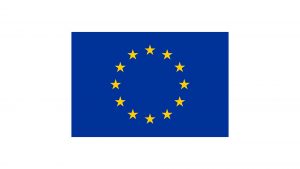
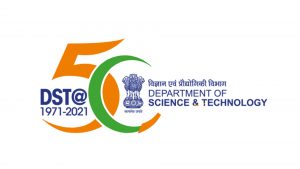
These projects have received funding from the European Union’s Horizon 2020 research and innovation programme under grant agreement No 957682 for the SERENE project, and No 101022587 for the SUSTENANCE project as well as the Department of Science and Technology (DST), Government of India under the SUSTENANCE project. Any results of these projects reflect only these consortia’s views and the funding agencies and the European Commission are not responsible for any use that may be made of the information it contains.
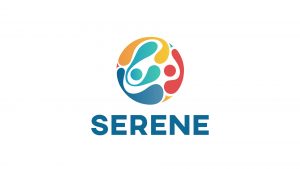
H2020SERENE
www.h2020serene.eu
https://www.linkedin.com/company/serene-h2020-project/
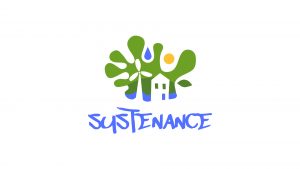
H2020SUSTENANCE
www.H2020sustenance.eu
https://www.linkedin.com/company/sustenance-h2020-project/
References
1: https://ec.europa.eu/eurostat/statistics-explained/index.php?title=Energy_consumption_in_households
2: https://energy.ec.europa.eu/topics/markets-and-consumers/energy-communities_en
3: Energy-Communities-Transposition-Guidance.pdf (rescoop.eu)
4: https://innovationsfonden.dk/sites/default/files/2019-03/societal_readiness_levels_-_srl.pdf
Please note, this article will also appear in the eleventh edition of our quarterly publication.

